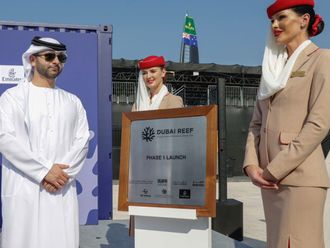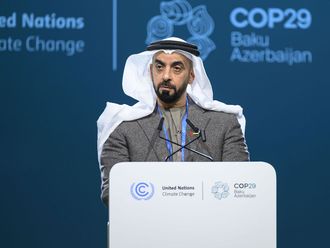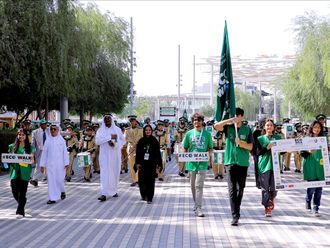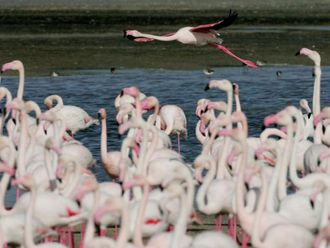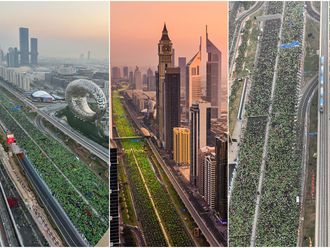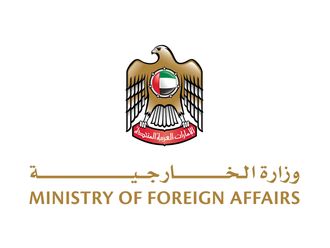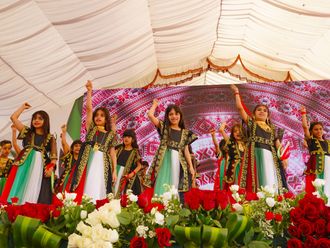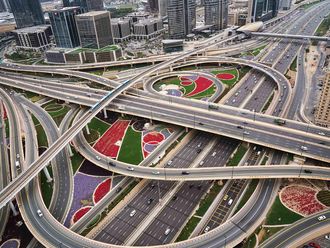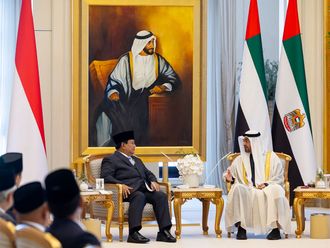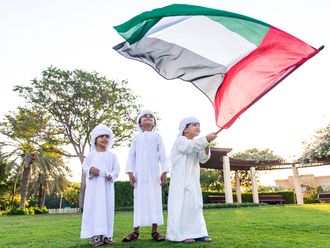Dubai: A fast-growing population has created a huge gap between demand and supply of seafood in the UAE, tilting the balance in favour of unsustainable imports.
Statistics from the Ministry of Environment and Water reveal that in 2013, the UAE’s fish catch stood at 73,203 tonnes, but consumption of seafood reached around 210,000 tonnes, leaving a deficit of 136,797 tonnes.
Dr Rashid Ahmad Bin Fahd, Minister of Environment and Water, on Monday encouraged local fish farmers and businessmen to invest in aquafarming to bridge this gap without taxing the environment.
“This is not just a challenge for the UAE; it is a global problem. Food consumption, as with other countries, has increased compared to production. The UAE seafood demand and supply gap is increasing but we aim to bridge it through aquafarming,” Dr Bin Fahd told Gulf News during the opening of the first Aqua Middle East Conference and Exhibition.
He added: “With the growth of population, we have seen a great increase in the demand and depleted those natural resources and contributed into creating a very huge gap.”
In February, a report by an ad hoc committee of the Federal National Council revealed that the current rate of exploitation of fish could make many marine species extinct in the next two decades. The same report said about 80 per cent of fish stocks in the UAE have either been overexploited or depleted.
Bin Fahd said aquaculture is the UAE fishing industry’s best possible solution. Different species of high-value species like hammour, sobaity, gabbit, and sheim can be grown locally to meet demand.
Last year, aquafarms in the UAE contributed 788 tonnes of fish and crustaceans, accounting for around 1 per cent of the fish catch. The ministry aims to increase this to 25 per cent by 2021.
Ten registered commercial aquafarms make up this Dh1.2 billion industry that sees the production of black tilapia in Al Ain, sturgeon at the world’s largest sturgeon farm in Abu Dhabi, red tilapia in Ras Al Khaimah, among others.
The main challenge to the growth of aquafarming in the UAE is the lack of a supply of juveniles, or fingerlings.
The ministry has provided a solution through the Shaikh Khalifa Marine Research Centre-Hatchery in Umm Al Quwain. The centre will provide fingerlings of hammour, sobaity, sheim, and gabbit to aqua farmers for a fee.
“The main driver of the aquaculture industry is a source of juveniles. This hatchery is now bridging this gap. The aim of the hatchery is produce 10 million juveniles in three years,” Eng Mariam Mohammad Saeed Hareb, Director, Education and Awareness and Project Management Office at the ministry, said.
By 2017, the centre will introduce in stages new species that will be used for aquaculture. Prospective species include cobia, safi, tuna, and abalone.


